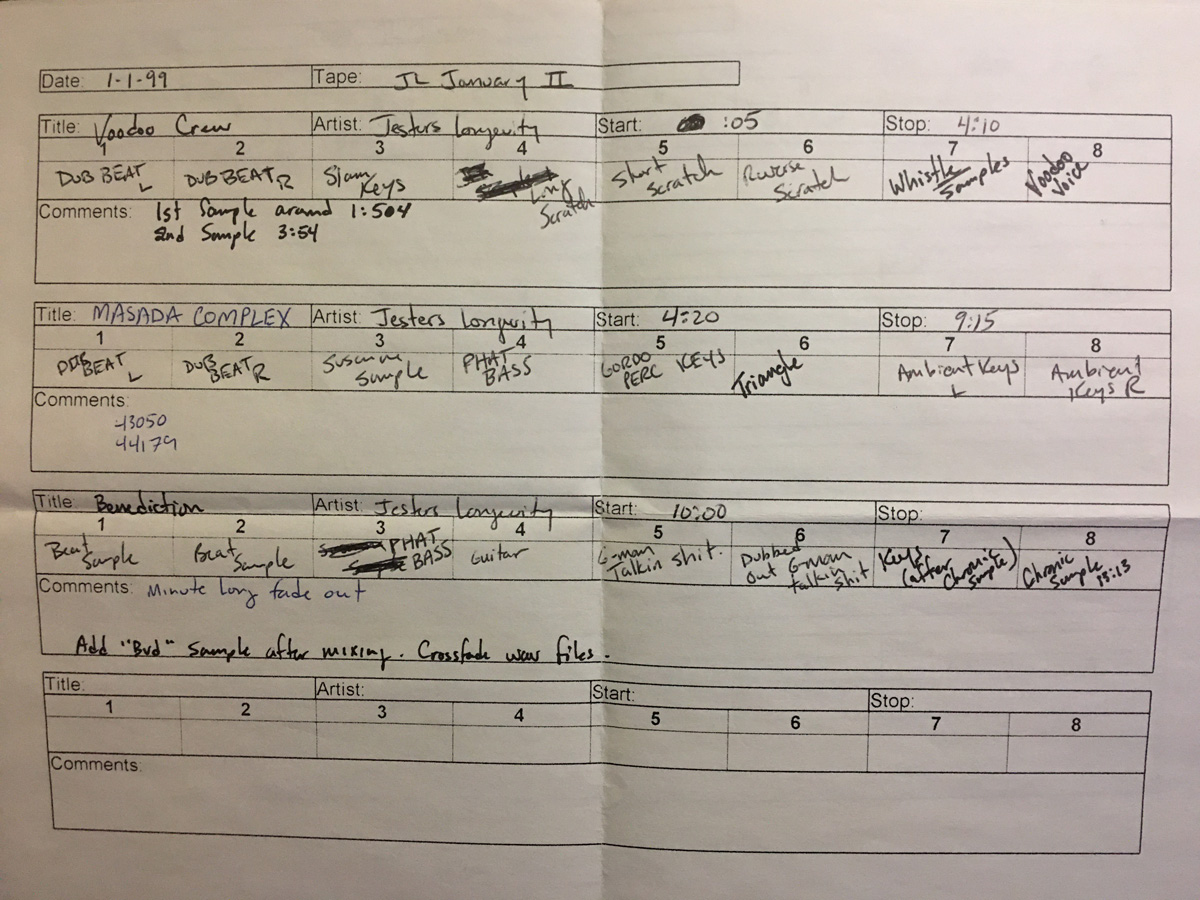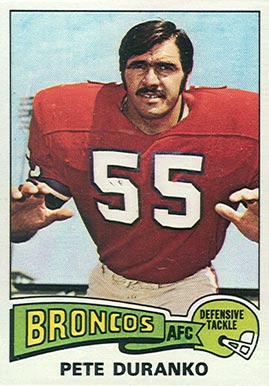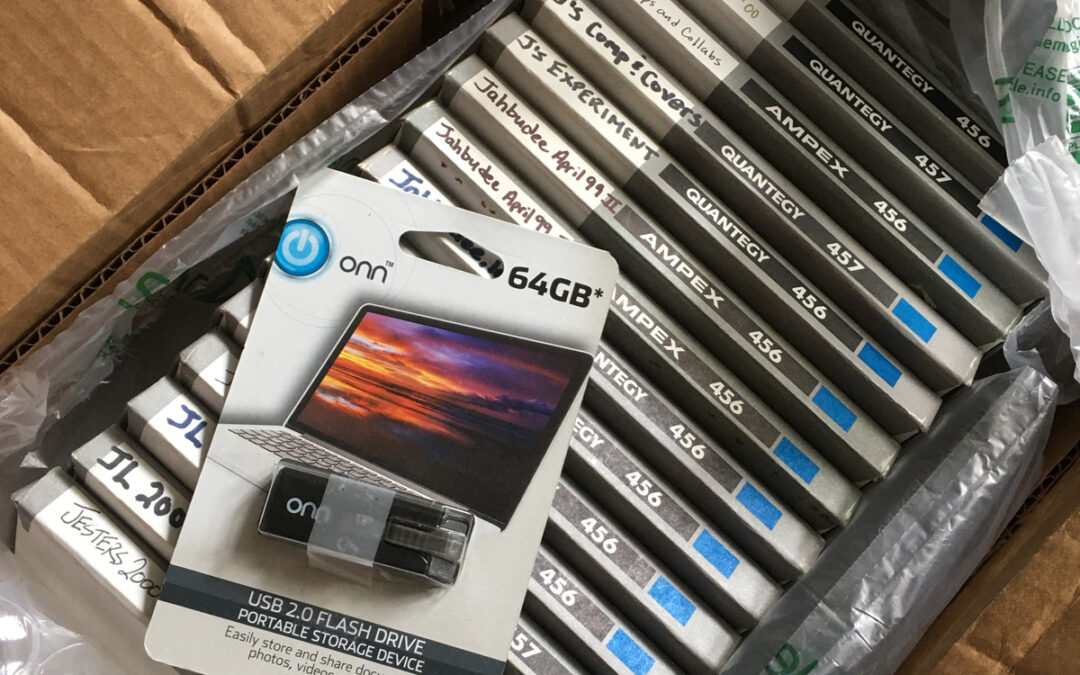The final installment of my JL “tape debacle” blog post mini-series, which started in this post and continued in this post, wraps up with great news! Last week on May 11, 2020 the box arrived back from The Tape Farm with all of the original tapes intact along with a shiny new USB thumb drive containing all of the masters converted to hi resolution wav files. (You can read those two previous posts for more details, but the short version is that I needed to have several 8-track reel-to-reel master tapes converted in order to work on a remix compilation for Jesters Longevity, a musical recording project that I participated in with my old friend, Dave Bellard, from 1998 to 2005.) Kudos and many thanks to Keith Leedham at The Tape Farm for his high quality work and excellent customer service.
I spent this past week going through and digitally archiving the files (immediately making several copies of each, of course) and preparing the songs that we had chosen for the Jesters Longevity compilation. Fortunately, I also still have the original track sheets that are dated, and include working song titles, instrument lists for the various tracks, and other interesting notes. It has been fascinating to dig through these old recordings and remember how we worked with limited tracks and what we decided to “print” to tape, meaning which sounds and effects were permanently processed and recorded versus the effects we would have applied during mixdowns. It has also been fascinating to actually see the sounds. Over the past twenty years, I’ve gotten used to recording with computers and actually seeing the waveforms of each sound that is recorded. In the tape world, you can only hear what sounds are on the tapes, you can’t see a graphical representation of them. Actually seeing the way the songs were recorded, compared to the work we did later using computers revealed how much less complex our arrangements were in the early years and gave clues to the decisions we made based on limitations that haven’t been there ever since.

So, all of the masters for the Jesters Longevity compilation project have been prepped and are ready for mixing. I’m excited for this next phase of the project where we start working with the sounds and seeing where we can take them.
On a side note, I didn’t just have the Jesters Longevity tapes converted, I also sent a handful of other tapes. While I never made a full solo album on the 8 track reel-to-reel when it was in operation, I did a lot of experimentation and recording on that machine. One of the surprises I found was a song I’m now calling “The Duranko Spoons”. My dad went to school in Johnstown, PA with a lifelong friend named Pete Duranko. Pete had gone on to play football at Notre Dame and then in the NFL with the Denver Broncos for about seven years back in the late 60s and early 70s. He remained a local celebrity in the Johnstown area until he passed away in 2011.
Back in 1999 I had the 8-track recorder at my parents’ house in Western PA for a short time and one day Pete just so happened to pay us a visit while I was there. It turned out he was an avid spoon player and was interested in the idea of multi-track music recording so we laid down a song for fun that day so I could show him how the whole thing worked. I included samples of my dad cheering Pete on as he cranked away on the spoons. I layered in other instruments to round out the vibe. I didn’t even remember making it until I heard the converted master tapes, so I spent a couple of hours remixing the track and sent it to my dad as a surprise. He told me that Pete would bring up that recording session anytime he visited him over the following ten years!
Duranko Spoons



YESSS I love that Durango song!!!! Wow that’s a great tune. The samples of your Dad and those dub horns are killer.
Recorded that right around the time we finished Analog Dub Report. I used a lot of the same sounds.